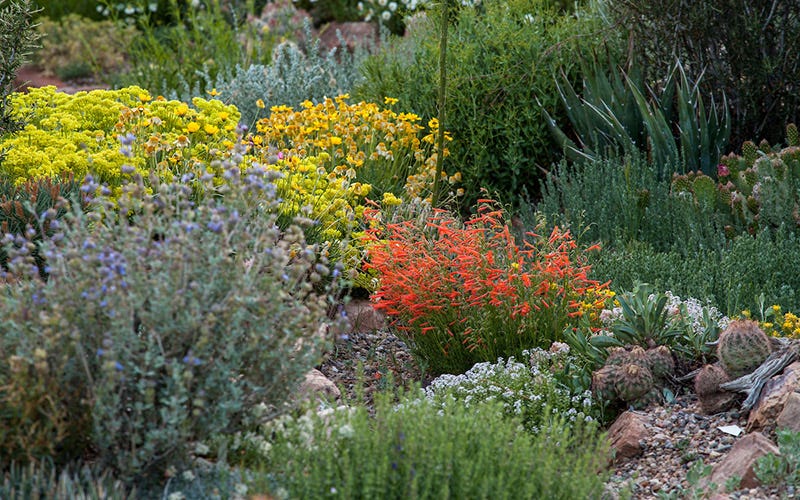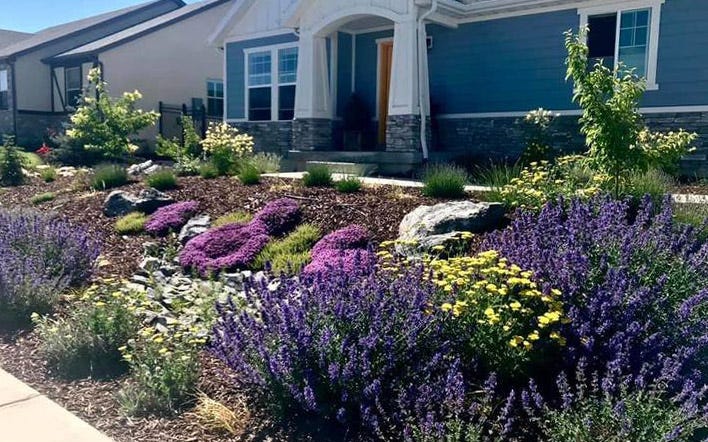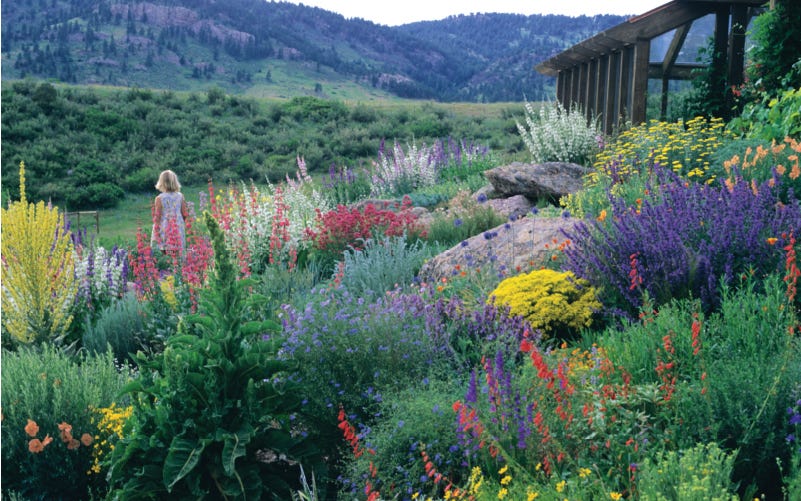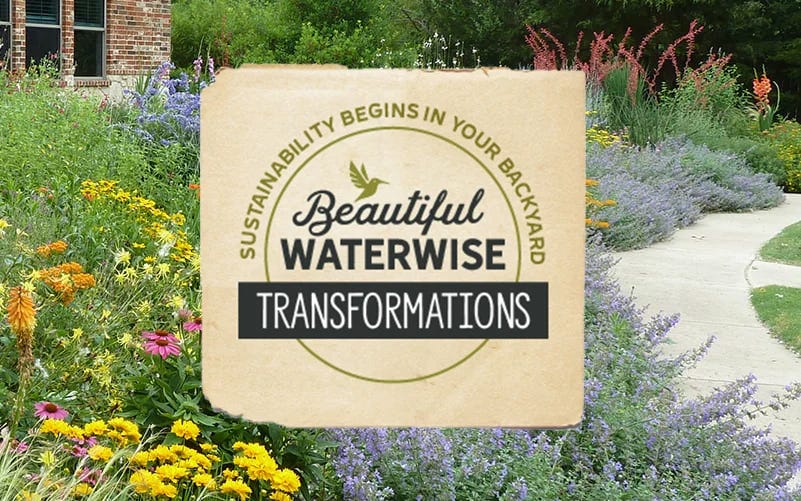
9 Tips For Professional-Looking Garden Design
by David Salman, High Country Gardens Founder
When it comes to planning a flower garden or preparing for a newly landscaped area of your yard, there are lots of choices to make. Many gardeners don't know where to start – but not to worry, the planning process can be simple! The helpful tips below will make garden design easy. Read on to learn more.
Garden Design: Getting Started
Here's a list of factors to understand before any plants go into the ground:
- How big is the area to be planted? Even if it's only approximate, this tells you how many plants will fit comfortably without becoming an overgrown jungle.
- What are the light levels and growing conditions? Are you planting in a hot, dry south- or west-facing location with full sun exposure? Or, are you planting in a cool and shady north- or northeast-facing area? Take some time to observe your new garden space, and look for plants that are suited for those conditions.
- Where is it in relation to the house or other permanent plants? How close is it to the house and water supply? Do you look out on the area, or can you see it from the street? Is there root competition from nearby trees or shrubs?
- What type of soil do you have? Our guide to Garden Soil Testing will help you learn all about your soil, the foundation of a healthy garden. You can also bring a sample to a local nursery or send a sample to a local extension program to have it tested. Soil and plants are interdependent, so to feed your plants, you must feed your soil. Always use natural and organic soil amendments, as nature intended.
- How much rainfall and moisture can you expect? Is it a low spot that collects water after a rain? Or is it on a slope that dries out quickly? Is it near a downspout from the roof that provides extra moisture for plants that like moist soil?
- What USDA Hardiness zone are you in? This will help you find the right plants for your climate.
Once you've taken some time to understand your growing conditions, you can start the fun part, creating your wish list of plants. You can use our robust website search and filter features to find plants that match your growing conditions.
Tips For Professional Looking Garden Design
I need to confess that I'm not a landscape designer by education, only by experience. I approach a new planting from the growers' side of the equation. Here are the design tricks I use to put together a cohesive and horticulturally sensible planting using perennial plants:
- Use a variety of flower types, for texture and visual interest. Planting a variety of flower forms also helps create a resilient garden and will help to support a wide variety of pollinators. Include...
- Always mix in Ornamental Grasses and Shrubs for structure, texture, and movement. Ornamental grasses and shrubs are a cornerstone of habitat-friendly gardens.
- Plant for long-lasting color. Perennials usually bloom for a month or so; in early spring, late spring, summer and/or early fall. Choose perennials that bloom in all four of these segments, so that you always have something in bloom. Not only does it look beautiful through the seasons, but your garden will also provide a steady source of food for pollinators and birds.
- Always use each plant in odd-numbered groups (3, 5, 7, 9, and so on.)
- Use larger groupings of plants to keep the look more restful to the eye. Planting just one or two of a large number of plants can lead to the planting look chaotic and unfocused. In large plantings, repeat groupings of plants more than once to create a more cohesive design.
- Choose plants with a variety of heights - short, medium, and tall - to add variety and avoid monotony. Plant the tallest plants toward the back and shorter plants toward the front of your arrangement, so that you'll be able to see each plant.
- Space plants according to their mature size, not the size they are in the pot. This is an all too common mistake, which leads to crowding and extra maintenance as the plant matures. It's also important to make note of which plants will naturalize and spread, and which plants will stay more controlled. Some plants are easy to transplant or divide when they fill in and get crowded, but other plants, like Peonies and Milkweed, have deep root systems that do not transplant well.
- Use lots of groundcovers. Groundcovers knit a planting together. Not only do they look better than mulch, they also provide additional benefits, such as attracting pollinators or bringing fragrance and color to the garden.
- Use some evergreen plants, Ornamental Grasses and Shrubs, and other plants with interesting seed heads, such as Coneflowers and Milkweed, to keep the garden interesting in the dormant seasons.
Shop Our Most Popular Perennial Plants
Take The Guesswork Out Of Garden Design With Pre-Planned Gardens
If you're a casual gardener, new to gardening, or just looking for a shortcut for the planning processes outlined above, we have a simple solution! Our Pre-Planned Gardens and Collections will help you maximize your garden's potential.
Each Pre-Planned Garden comes with a complete planting diagram that shows plant placement and plant spacing. Prepare the soil, place, and plant. Your living art piece will grow in and give you that professional look without a lot of effort. First introduced over 25 years ago, our "Gardens in a Box" continue to grow in popularity. These customer favorites sell out early every season.
Shop Pre-Planned Gardens & Collections
The Legacy of David Salman | High Country Gardens founder David Salman was a pioneer of waterwise gardening, passionate plant explorer, and charismatic storyteller. His commitment to cultivating a palette of beautiful waterwise plants transformed gardening in the American West.




